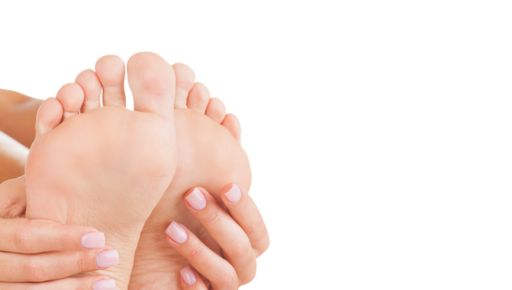
Mallet toes, a common deformity, occur when the distal interphalangeal joint is flexed, causing the toe’s tip to press into the shoe. This condition often results from muscle imbalance, arthritis, trauma, or poorly fitting footwear. Individuals experiencing symptoms like toe pain, swelling, or limited mobility should consult a specialized Tucson podiatrist. Prompt evaluation and personalized treatment by a knowledgeable podiatrist prevent complications, alleviate discomfort, and restore optimal foot function.
What are Mallet Toes?
Mallet toes are a type of toe deformity characterized by permanent flexion of the distal interphalangeal joint, causing the toe tip to curve downward. This condition typically affects the second, third, or fourth toes, resulting from muscle imbalance, arthritis, trauma, poorly fitting footwear, or genetic predisposition. Key features include pain, swelling, limited mobility, and callus/corn formation. If left untreated, mallet toes can compromise foot function, mobility, and overall comfort, emphasizing the importance of prompt evaluation and treatment by a specialized podiatrist.
What Causes Mallet Toes?
Mallet toes result from various factors disrupting normal toe alignment and function.
Primary Causes
- Muscle imbalance: Uneven forces exerted by toe muscles.
- Arthritis: Rheumatoid arthritis, osteoarthritis, or psoriatic arthritis.
- Trauma: Direct injury or repetitive stress.
- Poor footwear: Tight, pointed, or high-heeled shoes.
- Genetic predisposition: Family history.
Secondary Causes
- Neurological conditions: Diabetes, neuropathy, or multiple sclerosis.
- Tendon or ligament damage: Injuries or degenerative changes.
- Abnormal gait: Altered walking patterns.
- Foot mechanics: Abnormal pronation or supination.
- Age: Increased susceptibility with age.
Contributing Factors
- Obesity: Excess weight exacerbates pressure.
- High-impact activities: Repetitive stress from running or jumping.
- Poor foot hygiene: Untreated fungal or bacterial infections.
What Are The Symptoms Of Mallet Toes?
Mallet’s toes exhibit distinct symptoms affecting toe alignment, comfort, and mobility.
Common Symptoms
- Pain: Discomfort, tenderness, or pressure at the toe tip.
- Swelling: Inflammation or redness around the affected joint.
- Flexion deformity: Permanent bending of the toe tip.
- Limited mobility: Reduced toe movement or stiffness.
- Callus or corn formation: Thickened skin from repetitive pressure.
- Redness and warmth: Increased temperature and inflammation.
- Difficulty walking: Pain or discomfort during ambulation.
Advanced Symptoms
- Toe contracture: Fixed deformity.
- Skin thickening: Calluses or corn.
- Infection risk: Ulcerations or abscesses.
- Difficulty fitting shoes: Deformity complicates footwear selection.
- Gait alterations: Compensatory walking patterns.
How Are Mallet Toes Treated?
Mallet toe treatment focuses on alleviating pain, correcting deformity, and restoring toe mobility.
Conservative Management
- Footwear modifications: Roomy, soft shoes with padded toe boxes.
- Orthotics: Customized insoles or arch supports.
- Padding: Protective cushions or corn pads.
- Physical therapy: Exercises for toe mobility and strength.
- Pain management: Analgesics, anti-inflammatory medications, or corticosteroid injections.
Medical Interventions
- Taping and splinting: Temporarily stabilizing the toe.
- Anti-inflammatory medications: Oral or injected.
- Antibiotics: Treating infections.
Surgical Options
- Joint resection: Removing damaged joint portions.
- Osteotomy: Correcting bone deformities.
- Tendon realignment: Rebalancing tendon forces.
- Arthrodesis: Fusing joints for stability.
Adjunctive Therapies
- Cryotherapy: Reducing pain and inflammation.
- Ultrasound therapy: Enhancing healing.
- Wound care: Managing ulcerations.
Can You Prevent Mallet Toes?
Preventing mallet toes requires a combination of lifestyle modifications, proper footwear, and regular foot care.
- Maintain a healthy weight: Excess weight increases pressure on toes.
- Exercise regularly: Strengthen foot muscles through toe curls, toe spreads, and heel raises.
- Avoid high-impact activities: Reduce repetitive stress from running or jumping.
- Improve balance and coordination: Prevent toe injuries.
- Roomy shoes: Ensure adequate toe space.
- Soft, padded materials: Reduce pressure and friction.
- Wide toe boxes: Prevent toe crowding.
- Low heels: Minimize pressure on toes.
- Regular trimming: Prevent toenail pressure.
- Moisturize: Keep skin hydrated.
- Inspect feet: Monitor for signs of pressure, redness, or pain.
- Custom orthotics: Supportive devices for foot alignment.
Bottom Line
Mallet toes, a common yet debilitating foot deformity, necessitate proactive prevention and timely intervention. Through mindful lifestyle choices, proper footwear, and diligent foot care, individuals can minimize risk factors. Prompt evaluation by podiatrists or orthopedic specialists ensures effective management, alleviating pain, restoring mobility, and enhancing overall quality of life. By acknowledging preventative measures and seeking specialized care, mallet toe complications can be mitigated, promoting optimal foot health and well-being.